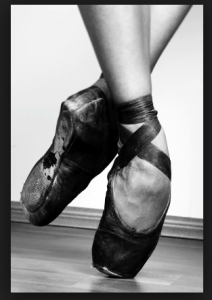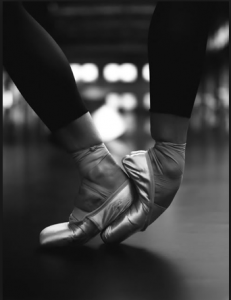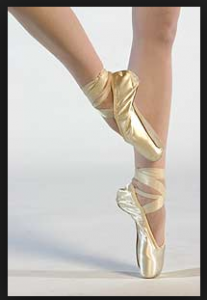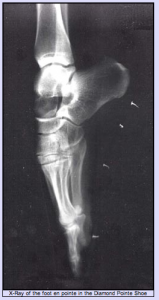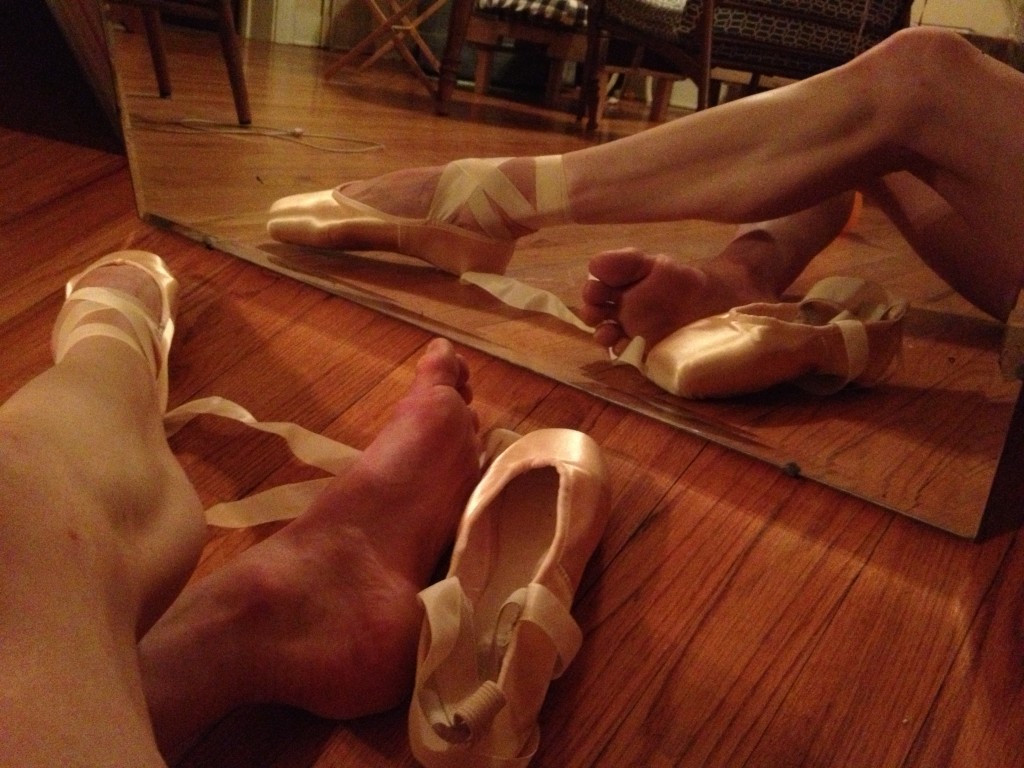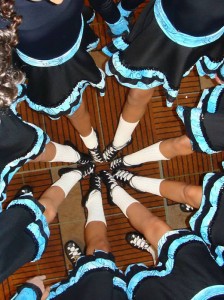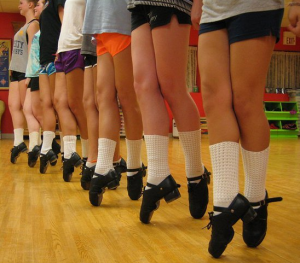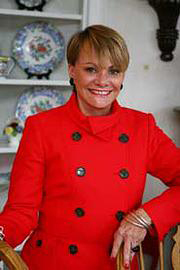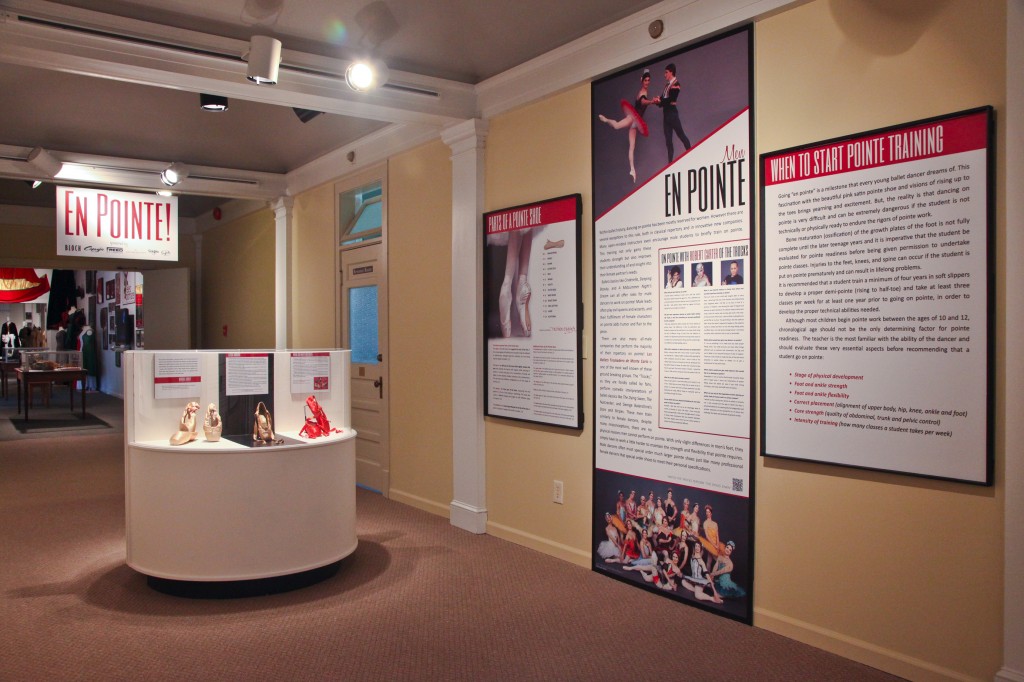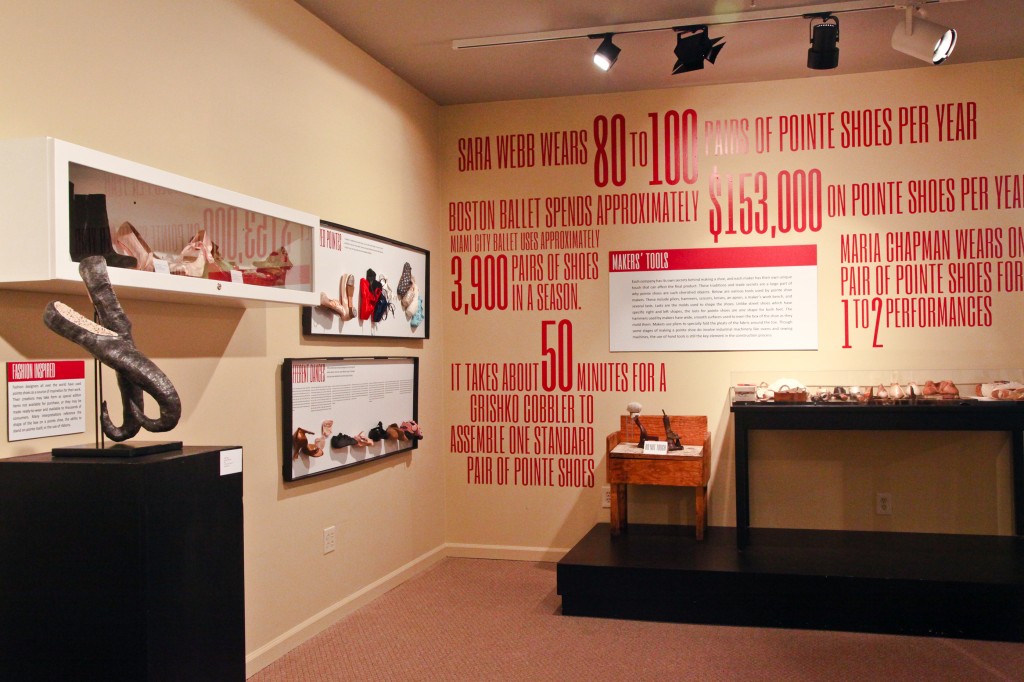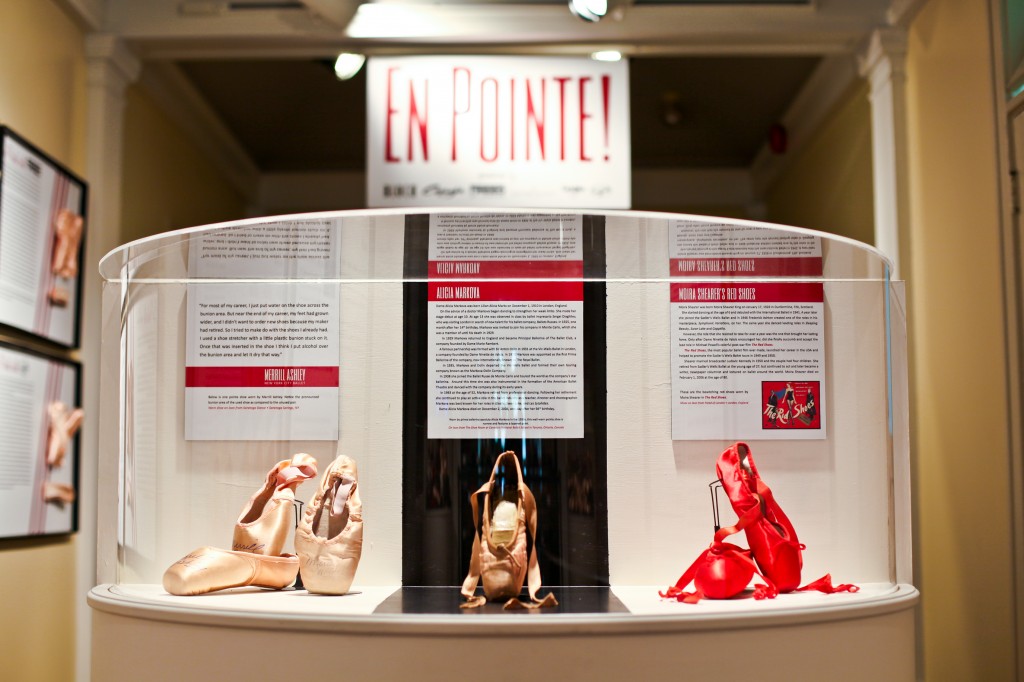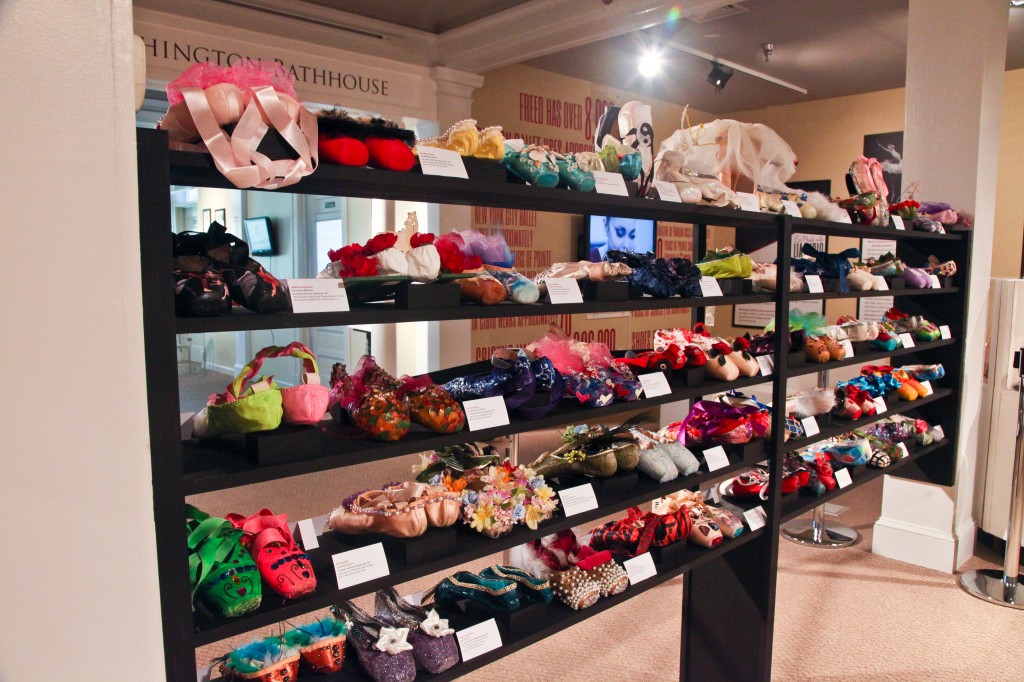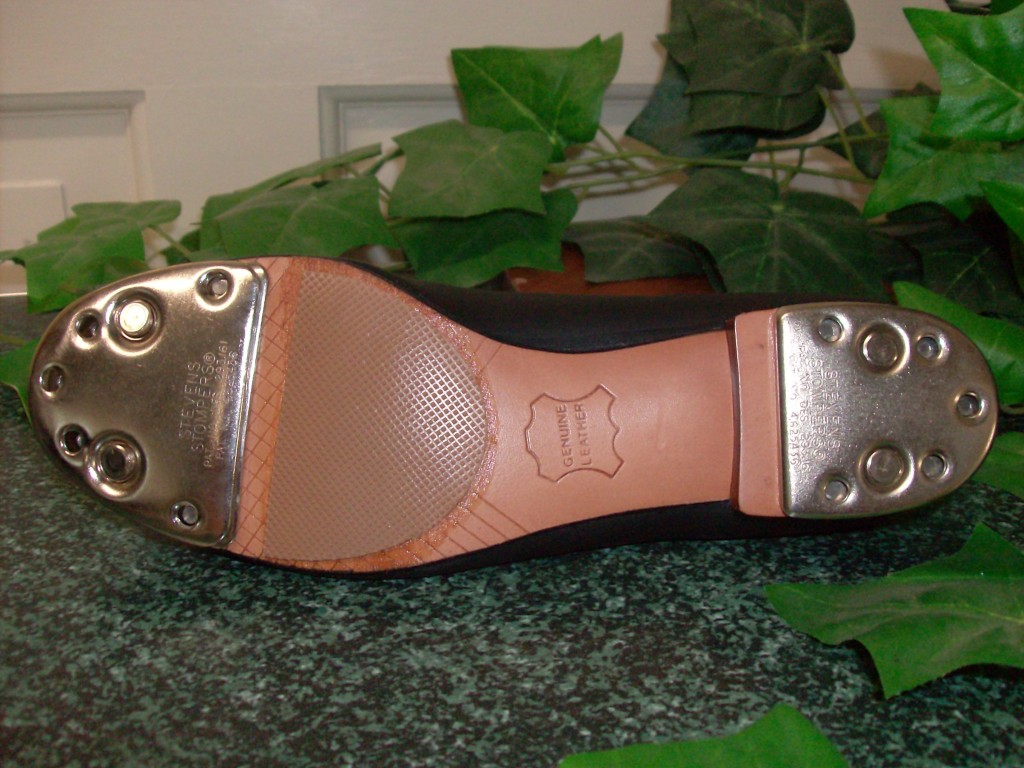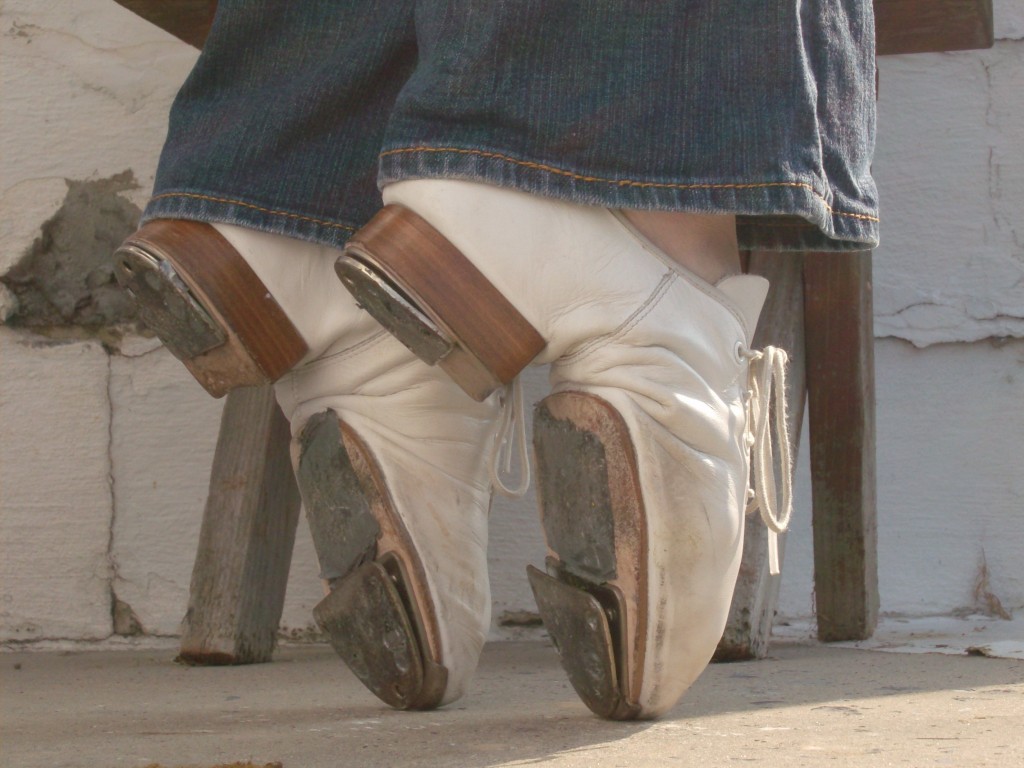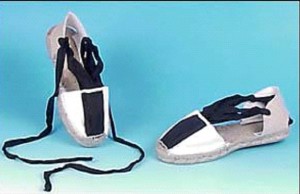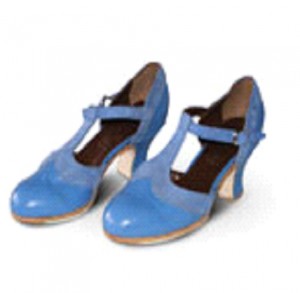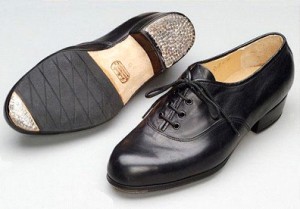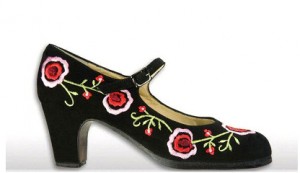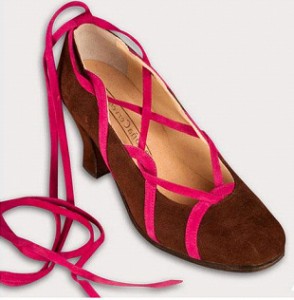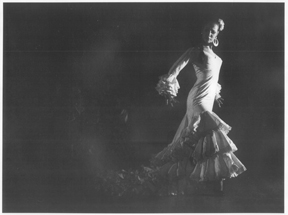by Emily Kate Long
Currently I’m in rehearsals for Cinderella, so the next few installments of Finding Balance will explore a range of topics relevant to that story. For this post, I’ll begin at the bottom with pointe shoes. They are a dancer’s glass slippers, and this is my own personal fairy tale: the search for my most appropriate shoe.
I’ve worn pointe shoes for twelve of my fifteen dancing years. In middle and high school I tried what seemed like almost every shoe out there, then performed surgeries major and minor on the shoes I chose to try to engineer the perfect pair. Darning of toes, slicing of vamps and shanks, re-threading of drawstrings, stitching of sides—so much fuss over footwear! It shouldn’t be that complicated, right?
Towards the end of January I found myself at my first pointe shoe fitting in nearly ten years. After flip-flopping between Freed and Chacott for all that time, I decided to try once again to explore some other options. I had one rule: I wanted to be able to put them on and dance. No fuss, no alterations. After trying on half a dozen or so different styles and brands, I decided to go right back to Chacott Veronese, the very first type of shoe I wore when I started pointe at age 12.
I was nervous! All those things I had been doing to my shoes to “enhance” them had become like security blankets or crutches. I felt like my feet were naked! The reality check was recognizing how much about my pointe work has changed over the past few years and trusting that I no longer need those crutches.
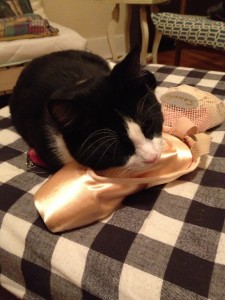
I spent much of my pre-professional training trying to compensate for what I believed were inadequate ballet feet. I wore “farches” (arch pads, like a padded bra for your feet). I stuck my feet under a dresser for twenty minutes each morning (a terrible idea, in case you were wondering). I wore my shoes really soft so I could push far over them and superficially achieve a more curved foot. Yikes!
Placing undue stress on the distal joints of the foot.
The result was that I never knew where my foot was going to be until it rammed into the floor. Slips and falls over the medial corners of my shoes were daily events. Bunions, bruised toenails, chronic ankle pain… I cringe to think of the gambles I took with the health of my feet, knees, and ankles. I believe that ballet is not inherently harmful to the human body. Distortions (even minor ones) cause injuries, and good equipment and good technique prevent them. I was due for an overhaul!
Re-learning pointe technique in my early twenties was confusing and frustrating at first, but patience and persistence have paid off. The changes have made it possible for my feet to be in control of and in harmony with my shoes instead of at their mercy! I learned how keep my toes vertical and allow the arch and instep to do the bending.
Examples of vertical toes with articulated arch
The ankle is designed to do this job because it is a weight-bearing joint. The metatarsals, phalanges, and the dorsal metatarsal and medial collateral ligaments are not. (Netter’s Atlas of Human Anatomy, 4th ed., plates 527-8)
Working on pointe in a more anatomically correct way has also had a positive effect on the overall muscular shape of my legs and the structure of my feet. Where I used to feel it necessary to fake a good arch, I now feel confident that the shape and articulation of my feet complement my overall line.
Which brings us to the heart of the matter: the importance of finding a shoe that a) fits and functions well and b) aesthetically matches one’s foot/body/leg line. Our style is partly dictated by our function, our function is partly dictated by our structure, and our shoes should complement both of those things.
To illustrate, here’s a bit about some of the shoes I’ve tried:
Chacott Veronese: My very first style of shoe. I loved them always and let myself be talked out of them time and time again. It feels good to be home! I can sew them and go, and their minimal shape complements my slight feet. They are made with a bouncy kind of glue instead of paste, and need some extra glue before wear because of the softness of the box relative to the shank.
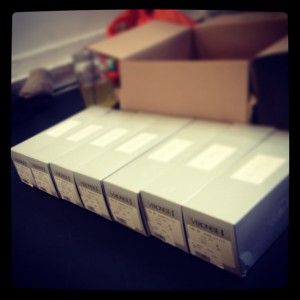
Freed Classic and Classic Pro: I chose these partly for aesthetic, partly for the Pro’s 3/4 shank. I loved the minimal-ness of Classic and the U shape vamp but the paste consistently gave out after less than thirty minutes of rehearsal! Eating through pair after pair of shoes was not a good use of my time or my company’s money. They were loud because of the amount of extra glue it took to make them worth it, which was awfully distracting. My preferred makers were also not always available. Pro lasted much longer, but felt like too much stuff on my foot.
Ushi Nagar: These were professional hand me downs. I liked that they had the same bounciness as Chacott, and it felt glamorous to wear somebody else’s special order shoes. They were a shoe of convenience, suitable but not ideal.
For me, this Cinderella story is also has a moral: if it ain’t broke, don’t fix it! I was born with feet that go with my body—not the “ideal” ballet foot by any stretch, but aesthetically adequate and sufficiently functional. Optimizing their work has refined their appearance. I’ve learned to love and appreciate them for what they are and what they do for me. As good workers, they deserve equipment that helps them out and shows them off!
Assistant Editor Emily Kate Long began her dance education in South Bend, Indiana, with Kimmary Williams and Jacob Rice, and graduated in 2007 from Pittsburgh Ballet Theatre School’s Schenley Program. She has spent summers studying at Ballet Chicago, Pittsburgh Youth Ballet, Pittsburgh Ballet Theatre School, Miami City Ballet, and Saratoga Summer Dance Intensive/Vail Valley Dance Intensive, where she served as Program Assistant. Ms Long attended Milwaukee Ballet School’s Summer Intensive on scholarship before being invited to join Milwaukee Ballet II in 2007.
Ms Long has been a member of Ballet Quad Cities since 2009. She has danced featured roles in Deanna Carter’s Ash to Glass and Dracula, participated in the company’s 2010 tour to New York City, and most recently performed principal roles in Courtney Lyon’s Sleeping Beauty, The Nutcracker, and Cinderella. She is also on the faculty of Ballet Quad Cities School of Dance, where she teaches ballet, pointe, and repertoire classes.





